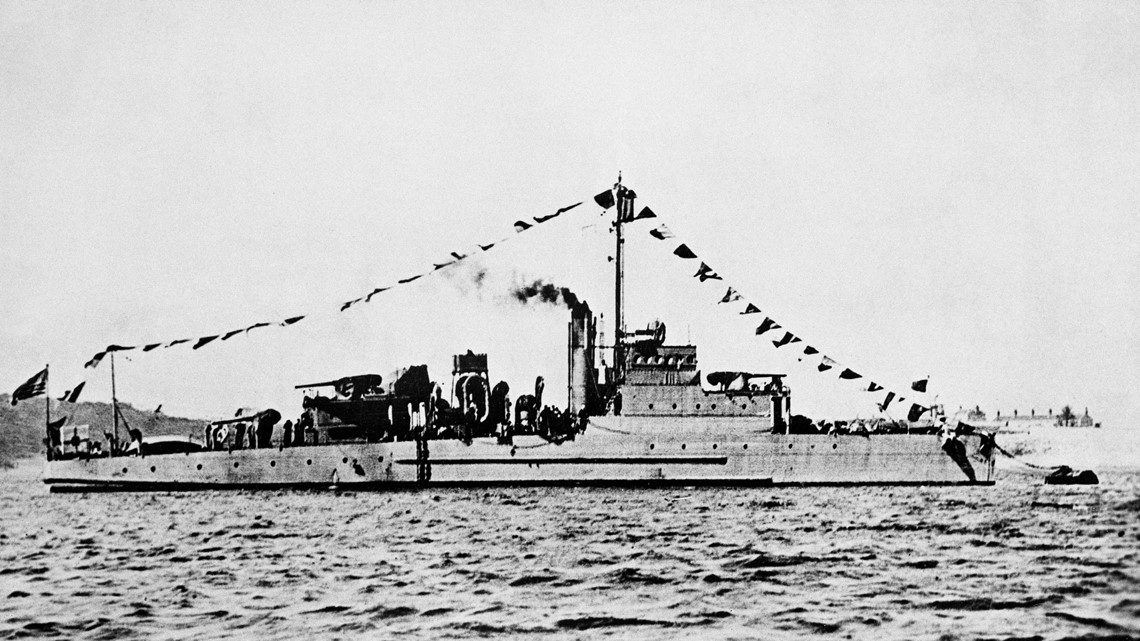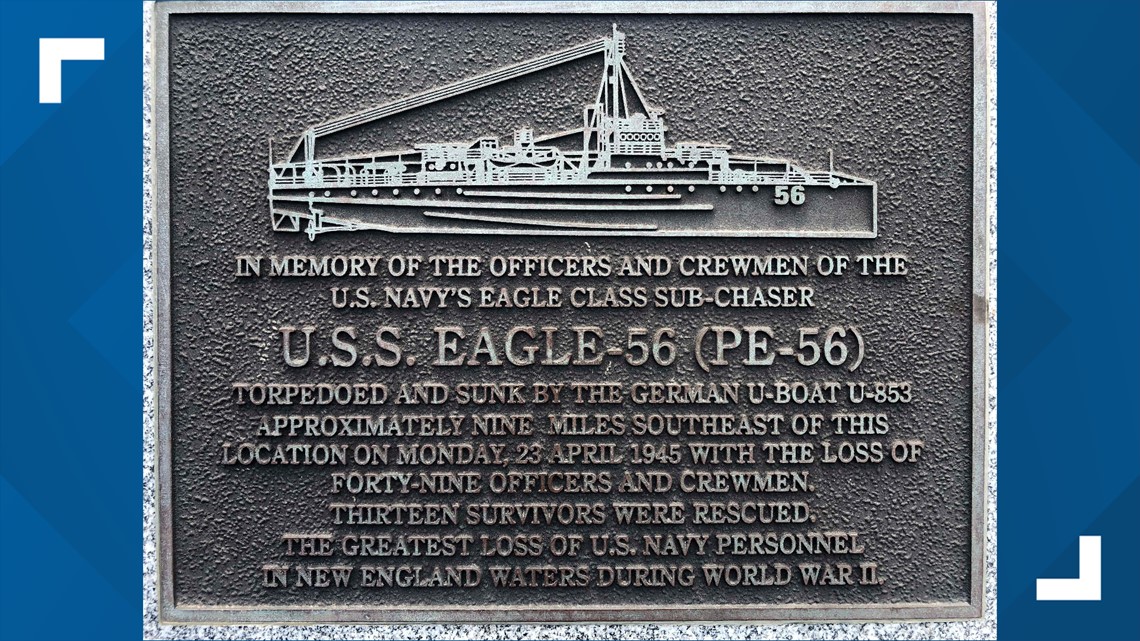It was the greatest loss in New England waters for the U.S. Navy during World War II -- the lives of 46 sailors, taken far too quickly when the USS Eagle PE-56 sunk off the coast of Maine.
For decades, the event on April 23, 1945 was believed by the public to have resulted from a boiler explosion. But 18 years ago, a Navy historian rebutted that theory, which had been circulated by the U.S. government.
The sinking was actually caused when a Nazi U-boat launched a torpedo, blowing up Eagle 56, which had been towing target buoys in Casco Bay. The boat was idling, as Navy planes dropped sand-filled bomb casings, about 500 yards away.


On Thursday, the Associated Press reported that the remains of the sunken ship had been discovered on the ocean floor, about 5 miles off of Cape Elizabeth.
Using sonar data, diver Ryan King of Brentwood, New Hampshire found the vessel about 300 feet down in June 2018. He later began working with the Smithsonian Channel to thoroughly explore the ship.
The information wasn't made public until July 18, over a year later.
The conversation in Maine about Eagle 56, though, has been a longtime in the making.
In 2002, three remaining survivors of that disaster recalled the historic day, sharing their memories with NEWS CENTER Maine's Bill Green.
"I was down below in my quarters. It was right after noontime...and I went down to catch a few minutes of sleep," John Scagnelli, who was the engineering officer on the ship, remembered. "By the time I got down onto the bunk and closed my eyes, the explosion happened, which physically picked me up and threw me up against the bulkhead...Then all my energy was spent trying to get off the ship."
Survivor Harold Petersen said a fellow crew mate came up to relieve him from his shift. The timing was a matter of luck for Petersen -- but it didn't pan out for his friend, Fred.
"Fourteen minutes after I was relieved, the torpedo hit," Petersen recalled. "And poor Fred -- he was on watch, and he didn't make it."
For the other survivors, 4x4 planks of wood used to support the ship saved their lives. People grabbed onto them in the water, which survivor John Breeze said was only 38 degrees that morning.
The bow of the ship went down last with the stern raised up. As the surviving crew fought off hypothermia, slowly losing hope, American ships started to arrive and came to their rescue.
Following the disaster, the man who commanded the port of Portland led a naval inquiry to figure out what had happened. His findings showed the sinking was not caused by a U-boat attack, but by a boiler explosion, instead.
That false conclusion lived on for 56 years and sincerely troubled some survivors -- in particular, Scagnelli, who was in charge of the boilers as the ship's engineering officer.
"Pinpointing the boiler as the reason for the explosion left me pretty sad about it, because I realized that that was my responsibility," Scagnelli said. "If there was a defect, I was the guy who was on the spot for it."
But Scagnelli said he knew a boiler explosion couldn't have caused the sinking. He had gone over the boiler a few weeks before the incident and had done a number of tests on it.
Years later, at the start of a new century, Navy historian Paul Lawton confirmed Scagnelli's heartfelt beliefs. Lawton's findings proved that a U-boat attack had indeed caused the deadly and tragic events of that day. The Associated Press reports that video showed the ship's boilers were intact and were not the culprit of the sinking.
The revelation was a bittersweet truth for survivors like Petersen.
"The thing I feel real bad about is the poor mothers and fathers who passed away, not knowing the heroes that their sons were," Petersen told NEWS CENTER Maine.
After the new findings were released, 50 Purple Heart awards were given out posthumously at a ceremony on June 8, 2001. Scagnelli, Petersen, and Breeze all gathered together for the first time in 57 years.
Since they were both injured during the sinking, Scagnelli and Petersen received Purple Heart decorations.
Those interested in this fraction of history can visit Fort Williams Park at Cape Elizabeth to read a plaque dedicated to those who died when Eagle 56 sunk to its fate off the coast of Maine.



